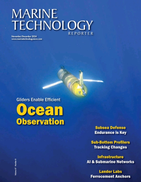Future ROV Designers
to be found at the Center 2013 International Underwater ROV Competition
“Away” calls out the deck crew feeding the tether line as the ROV slips silently below the surface. The pilot grips a joystick and deftly maneuvers the craft downward toward its target, intently following its progress on a pair of eight-inch monitors. The copilot, in charge of the working appendages begins the delicate task of opening an underwater hatch. As an observer, it’s hard to comprehend that the UR2 ROV crew you are watching is made up of sixth-graders, the youngest team at this year’s International Underwater ROV Competition. Their teamwork and intensity belies their tender years.
This is the 12th year the Marine Advanced Technology Education (MATE) Center at Monterey Peninsula College has held the competition. Their goal in doing so is to increase awareness of marine technical fields and careers. Their efforts connect students and educators with employers and working professionals. The ROV competition is a big event, but it is not all they do. Their workshops provide educators with resources and training to bring the world of marine technology, research, exploration and industry to their classrooms. MATE is funded by the National Science Foundation.
For the students, it’s all about the ROV Competition. Fifty-five teams from around the world designed and built their vessels, raised the money, surmounted international travel hurdles and made their way to the Weyerhaeuser King County Aquatics Center in Federal Way, Washington, a suburb south of Seattle and the site of this year’s culminating event hosted by the University of Washington.
Each year the MATE Center staff designs a mission, or theme, for the competition. The missions and the resulting task lists are carefully chosen to replicate real life challenges in the ROV world and many times are based on actual events. In 2011, thanks to the Deep Water Horizon disaster, the mission revolved around the skills needed to respond to an oil spill. This year the mission focused on building an ROV capable of repairing and maintaining ocean observing stations along the Washington Coast.
Vessels had to submerge, pick up an instrument, bring it to the surface and install a replacement. Other tasks included unlocking latches, opening a hatch door, placing a large object into a barely larger space, then closing and relocking the hatch. Extra points were gained for removing simulated sea life fouling the exterior of the station. Teams were allotted 15 minutes to accomplish their five tasks with points given for each completed task. Further complicating their efforts and to simulate real-world conditions, the pilots do not have direct line-of-sight to their vessels, they must observe the operation on monitors with the vessel’s own onboard cameras providing the feed.
A cadre of scuba divers stood by to retrieve wayward vessels – there were a few. The Ranger Class vessels deployed in the shallow end of the Olympic-size pool, while the more experienced competitors in the Explorer Class faced the added challenge of navigating in the deep water of the diving pool.
Competing at the International event is the culmination of many months of proving their vessels in regional competitions before qualifying for the International event. This year the 50-plus teams ranged in age from the sixth-graders of Thunder Bay, Michigan, to undergraduate students from Purdue University. Competitors arrived from Taiwan, Saudi Arabia, Russia, Singapore, Egypt, U.K., Macao, Venezuela, China and Hong Kong with plenty of U.S. and Canadian teams as well. Representing home schools, colleges, universities, public and private schools, even 4-H clubs.
The SeaTech Robotics 4-H club from Mount Vernon, Washington has attended the MATE competition every year since 2007. Club leadership includes three engineers and one orthopedic surgeon with a background in biomechanics. Club organizer Lee McNeil, an engineer with Boeing who personally spends 30-40 hours a month helping the students, said “All of us have a desire to introduce these kids to opportunities that will greatly improve their futures. These experiences give them a glimpse into what they could do if they are willing to finish school and work really hard.” Local businesses donate services to the team for water-jetting, machining and manufacturing, but all the work is done using CAD models created by the students themselves.
McNeil said, “Students can put in between 200-500 hours.” One of his teams logged over 100 hours of pool time just practicing for the mission. It paid off. The SeaTech Explorer team earned the highest Mission score in this year’s event and placed third overall.
Frugal teams with little or no sponsorship proudly reuse components from prior years’ vessels spending as little as a few hundred dollars. Large, established teams with big sponsors may invest over $10,000, although much of that is in donated services. Most teams’ financial investment ranged somewhere in the $700-$800 price range according to MATE staff. The staff bestowed this year’s “Bang for the Buck” award to the Explorer Team from Linn-Benton Community College and the Ranger Team from Columbia Virtual Academy. The award is given to the team who spent the least amount of money on a vessel that performed well. Each team finances their project through fundraising events, corporate sponsorships, grants or parents’ checkbooks.
The Long Beach Community College team wasn’t satisfied with their 125 Mission points on day one. They opted to try again on day two in hopes of bettering their score. Their sleek, impressive machine named “The Dude” sat confidently at the pool’s edge, lights blinking a standby message. But despite repeated attempts their software refused to boot-up and The Dude remained deckside. The team was pragmatic about the glitch, said copilot Michael Marin, “It happens in real life, and it happens here.”
For Marin and teammate Tara Willis, the event is about more than competing for glory and a ribbon; it’s about finding a job in the work they love. Based on her contacts at the 2012 event, Willis scored an internship aboard the E/V Nautilus, Robert Ballard’s exploration ship, last summer. Her knowledge, enthusiasm and willingness to work hard earned her a return trip to the Nautilus, this time with a paying job “playing with real ROVs,” she said with a huge grin.
Finding and nurturing the interests, skills and knowledge of future mariners is why Oceaneering, a premier ROV company, is a prime sponsor of the event. The company realized several years ago that the industry was rapidly outgrowing the available trained workforce. MATE offered the perfect connection between the industry, the educational system and future ROV pilots, not to mention maintenance techs, designers and builders. Oceaneering and several other maritime companies staff booths at the event and actively recruit talented students into their ranks. Students connect with companies offering internships and future jobs in all facets of the industry. The sponsor list reads like the phone book of marine technology companies.
As MATE’s spokesperson, Caroline Brown explained, an ROV pilot’s lifestyle isn’t something adults generally come to in the middle of their careers. Shipboard life entails many weeks at sea away from home and family. If you start your career embracing the lifestyle, it’s much easier to build a life and family around the schedule than the other way around. Capturing kids’ imagination, giving them the chance to play with “toys” they’d only dreamed of and then showing them how they can make a career of playing with those toys is one way the industry is able to fill their staffing needs. Not everyone interested in ROVs longs for a career at sea; fortunately the industry needs shoreside specialists as well as the seagoing staff. To meet that need, and to encourage a holistic view of the ROV world, MATE expanded its program to include more than just piloting underwater robots. In addition, teams must also develop a business structure complete with a CEO, engineering staff, finance and marketing divisions. A few years ago the MATE staff decided that having the teams develop a business enterprise around their vessel would draw in students from outside the normal science and engineering tracks. The teams now include students with an interest in math for their finance officers, those with an entrepreneurial spirit for business development, even graphic designers to develop marketing materials.
There is no limit to the number of club members; however, the poolside operating team is limited to six students on deck. That didn’t keep the 30-plus cheering supporters in matching t-shirts from Jesuit High School in Carmichael, CA, from making their enthusiastic support known from the viewing stands. The Jesuit HS team took home top honors in the Explorer Class as well as the coveted Safety Award.
The Arab Academy for Science and Technology and Maritime Transport (AASTMT) sent two teams of Egyptian college students, one from Cairo and one from Alexandria. Both teams were stopped by security staff at the airport in Scotland. Their ROVs, dubbed suspicious devices, were inspected, disassembled and ultimately broken during their four-hour delay before being returned to the students with a “sorry for the inconvenience” note. The teams continued on to Federal Way, where they worked through the night in their hotel room to repair the damage in time for the morning competition. Adding to their woes, three members of the Cairo team were unable to obtain Visas and had to remain at home. The chief engineer had to quickly learn to pilot the crippled vessel. In spite of the difficulties, both teams remained upbeat and positive about the experience. MATE staff bestowed their “Guts and Glory” award on the Cairo team for persevering through adversity.
Safety checks are a key part of the competition. Safety judge Scott Fraser, an educator from Long Beach College and a long-time supporter of MATE, explained the process. “First we look for obvious things like sharp edges, exposed wires, loose connections.” Next they take a more technical view looking at wiring harnesses, pressure canisters, fuses and more. Teams are docked 10 points if they receive a safety violation and they are given a chance to correct the problem. That doesn’t mean problems don’t develop during the competition, and the staff is vigilant.
The team from Mansoura University in Egypt, whose vessel escaped the rough treatment of security authorities, nonetheless suffered some shipping damage and failed their initial safety check. They forfeited their first run on day one to resolve the problems. When they returned to the pool on day two for their last chance, a bright spark and an unpleasant arcing sound, followed quickly by a puff of smoke, brought safety officials running to the station. The team was disqualified before their vessel saw water. Disqualifying a team is the hardest part of the job according to safety judge Leah Hebert. “You have to do it for everybody’s safety,” especially with the trifecta of danger signs; sparks, smoke and that unmistakable “ffttzzz.”
Hebert understands the dangers better than most. As the first female ROV pilot in the world, she brings the highest level of professional field experience to the competition and serves as an admired role model to the young women interested in the marine technology field. Her employer, Oceaneering, supports Hebert’s involvement with the MATE center. Next year the finals will be held in Thunder Bay, Michigan, hometown of that team of sixth graders. Dozens of teams and hundreds of future mariners around the world are eagerly awaiting MATE’s November mission announcement so they can start inventing the next generation of ROV’s.
For more information on the MATE center and the ROV competition, check out their website.
www.marinetech.org/rov-competition-2
About the MATE Center
The Marine Advanced Technology Education (MATE) Center is a national partnership of organizations working to improve marine technical education and in this way help to prepare America’s future workforce for ocean occupations. Headquartered at Monterey Peninsula College (MPC) in Monterey, California, the MATE Center has been funded asa National Science Foundation (NSF) Advanced Technological Education (ATE) Center of Excellence since 1997. www.marinetech.org
(As published in the September 2013 edition of Marine Technology Reporter - www.seadiscovery.com)




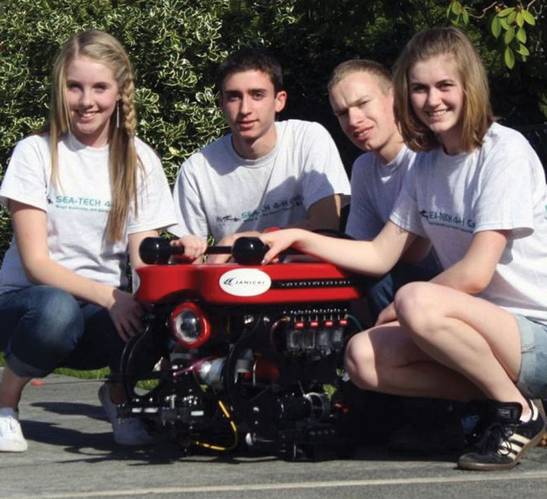
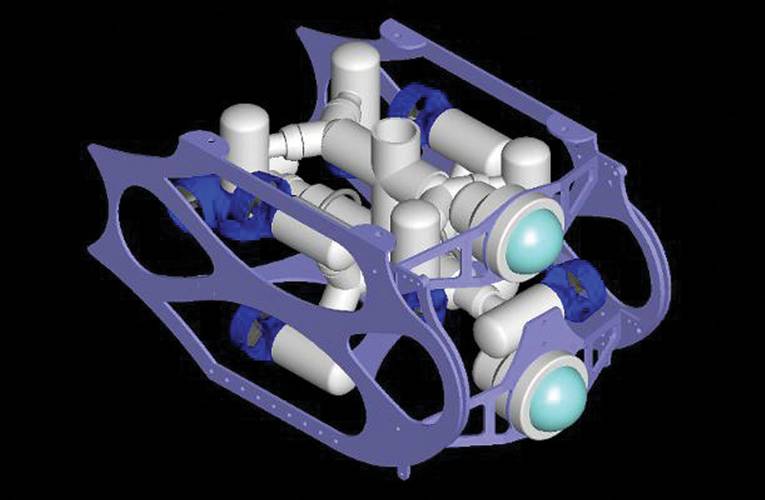
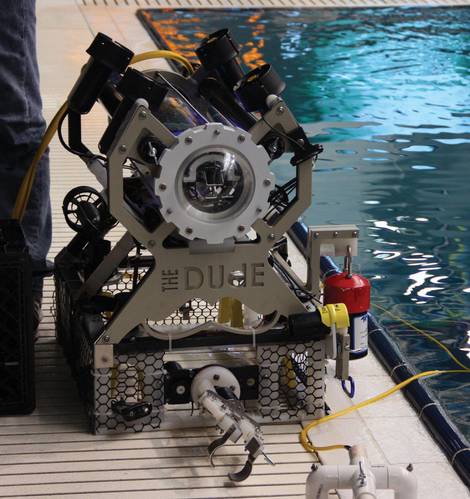

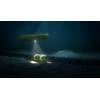
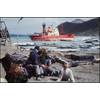






 December 2024
December 2024


